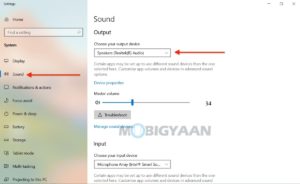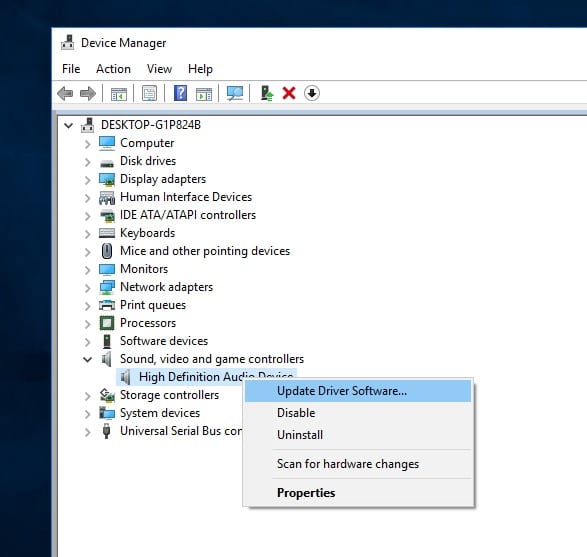
A Plugable USB 3. Alternatively, after selecting Open Sound Settings, use the dropdowns under the Input header. 
Windows 10/11-Select Open Sound Settings then click the link under 'Related Settings' for Sound Control Panel, then click the Recording tab.The Sound window will open with the Recording tab highlighted Windows 7/8.x-Select Recording Devices.Please see our pairing and configuration guide for Bluetooth devices. A check mark should appear next to your device, and sound should now play through it
 Right-click on the device you found in step 3 and select Set as Default Device. A Plugable USB Audio adapter will appear as USB Audio Device. A Plugable USB 2.0 docking station will appear as USB Multimedia Audio Device. A Plugable USB 3.0 Silicon Motion docking station or sound-enabled display adapter will appear as SMI USB Audio. A Plugable USB 3.0 docking station or sound-enabled display adapter will appear as Plugable Audio. Alternatively, after selecting Open Sound Settings, use the dropdowns under the Output header. Windows 10/11-Select Open Sound Settings then click the link under 'Related Settings' for Sound Control Panel, then click the Playback tab. The Sound window will open with the Playback tab highlighted Windows 7/8.x-Select Playback Devices. Right-click a device and select 'Set as Default Device' to make it your default audio. Use the Playback and Recording tabs to choose your devices. Select 'Playback devices' if you want to select your default speakers or 'Recording devices' if you want to select your microphone. Right-click on the speaker symbol in the Windows taskbar/system tray To do this, right-click the speaker icon in the notification area. It is also a good idea to make sure that your sound device is turned on, and that the device's volume control is not at the absolute minimum setting. Check that your device is properly connected, and that any necessary drivers are installed. This script has been developed with PowerShell v6.2.0 and hasn’t been tested on any other version. I do recommend if you want to control the audio devices more comprehensively then one of the third-party software solutions will serve you better. It also makes it a little clearer as to how it's been done.
Right-click on the device you found in step 3 and select Set as Default Device. A Plugable USB Audio adapter will appear as USB Audio Device. A Plugable USB 2.0 docking station will appear as USB Multimedia Audio Device. A Plugable USB 3.0 Silicon Motion docking station or sound-enabled display adapter will appear as SMI USB Audio. A Plugable USB 3.0 docking station or sound-enabled display adapter will appear as Plugable Audio. Alternatively, after selecting Open Sound Settings, use the dropdowns under the Output header. Windows 10/11-Select Open Sound Settings then click the link under 'Related Settings' for Sound Control Panel, then click the Playback tab. The Sound window will open with the Playback tab highlighted Windows 7/8.x-Select Playback Devices. Right-click a device and select 'Set as Default Device' to make it your default audio. Use the Playback and Recording tabs to choose your devices. Select 'Playback devices' if you want to select your default speakers or 'Recording devices' if you want to select your microphone. Right-click on the speaker symbol in the Windows taskbar/system tray To do this, right-click the speaker icon in the notification area. It is also a good idea to make sure that your sound device is turned on, and that the device's volume control is not at the absolute minimum setting. Check that your device is properly connected, and that any necessary drivers are installed. This script has been developed with PowerShell v6.2.0 and hasn’t been tested on any other version. I do recommend if you want to control the audio devices more comprehensively then one of the third-party software solutions will serve you better. It also makes it a little clearer as to how it's been done. 
This is so changes can be made quicker and easier for Administrators (rather than programmers) without the need for a compiler. The scope of this script is to be able to change the default audio device without the use of any additional third-party files.

Also be in mind that the "non-official" way this script accesses the audio devices is in no way supported by Microsoft who could change the underlying software at any time. It can be easily altered for windows 10 by changing the various COM ID's. NOTE: this script has been written for Windows 7 (and possibly 8.x). Powershell Script to Change the Default Audio (In/Out) Device in Windows 7 Descriptionįor reasons only known to themselves Microsoft have supplied no official API or programmatic way of setting the default audio device in Windows.








 0 kommentar(er)
0 kommentar(er)
